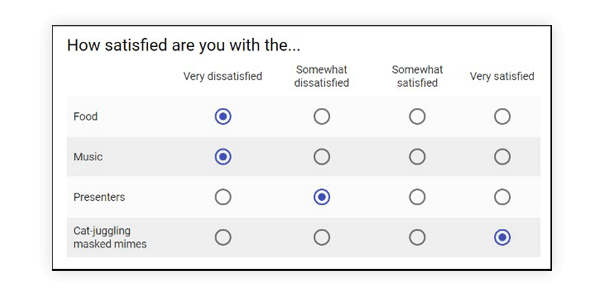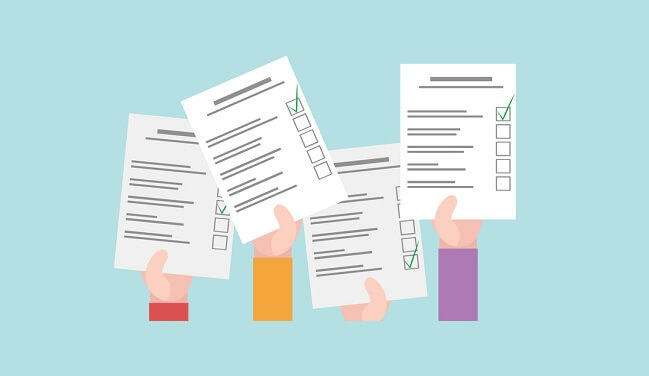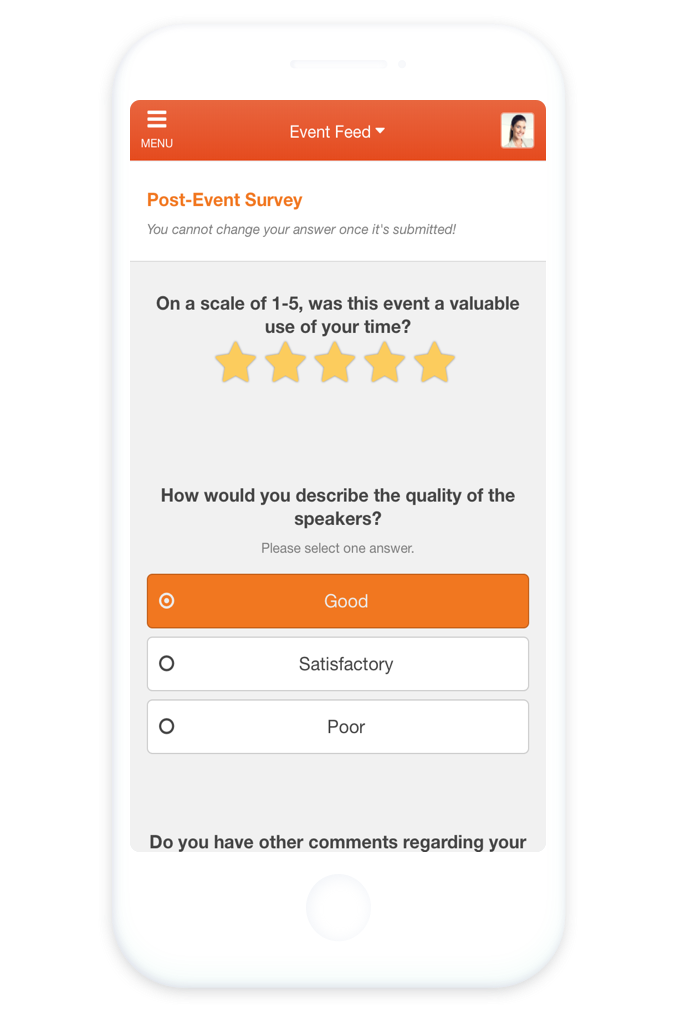7 Ways to Build Effective Post-Event Surveys
Phew! Your event is finally over. You spent months parkouring around vendor tech, sponsors, attendees, and venues to finally nail the perfect event!
You’re done... aren’t you? Sure! That crowd may have been roaring and clapping with the vigor of a tiger with a six-pack of RedBull, but how do you know that they liked your event?
Is gauging crowd reactions an accurate representation of how people felt about your event?
Probably not. But don’t worry!
There’s a way to figure out if your sponsors thought your keynote speaker gave them a good enough shoutout. And, there’s a way to tell if any parts of your event soured the audience’s tounges.
Post-event surveys give you the opportunity to collect real, person-to-person feedback on your event that would normally get drowned out. How do your stakeholders (i.e., your attendees and those sweet, sweet sponsors) really feel about your event?
Let’s find out!
What is a post-event survey?

An event survey is a questionnaire you send out (usually digitally) to your sponsors, attendees, employees, volunteers, VIPs, and on-site vendors.
Typically, these surveys combine open-ended and multiple-choice questions together, and they serve as a way for you to collect some behind-the-scenes feedback on your event. This may give you the types of answers people generally don’t feel comfortable saying to your face (i.e., the bad stuff).
A post-event survey is just an event survey that you send everyone... post-event.
So here’s the question, why in the world is this a good idea?
Do you really want to allow people to say nasty things about your event to you hidden behind the mask of anonymity and digital interaction?
You bet you do!
Why use post-event surveys?

The average business hears from only 4% of its dissatisfied customers.
Not everyone is the “yell it in your face” type. In fact, we would say that angry attendees who voice their concerns are way easier to handle than the silent, brooding type.
Because here’s the thing.
That person whose disappointed, but doesn’t have the patience, time, or comfortability to voice it to you, they’re just going to disappear.
91% of attendees who are unhappy with an event will leave without complaining and never engage with your brand again.

And just because they don’t tell you doesn’t mean they don’t tell anyone.
- The average American tells 15 people when they’ve had a poor experience.
-
56% of people around the globe right now refuse to do business with a brand because of a past experience.
Don’t worry. There’s a silver lining at the end of this statistical apocalypse. It’s post-event surveys. If you resolve a customer complaint, they will do business with you again over 70% of the time!
So, not only do post-event surveys help you improve future events, but they can help you save sinking customer relationships and reel them back in for another round of tango.
At this point, you should like it, love it, and want some more of it.
But how do you actually make a post-event survey? Here are some tips to get you started.
Hint: We have some other post-event survey tips that will rock-your-socks-off.*
*not responsible for missing socks
|
Want more data and ticketing stats? With Purplepass, create custom reporting, |
How to make a killer post-event survey
1. Keep it short & sweet
According to SurveyMonkey data, the more questions you have, the faster people abandon the survey.
Let’s be honest.
Your attendees and sponsors are doing you a favor by filling out your survey. Don’t try to learn every little detail and make them suffer. Get the important stuff first.
2. Know your goals
Keeping a survey short isn’t easy. You have to know what your goals are. What are you really trying to figure out? Chances are, you have specific goals in mind for your overall event.
Your survey should help you measure the success of those goals.
Are you trying to wow sponsors?
Is making sure that security was adequate a top concern?
Figuring out goals gets easier as you do more and more events. Your first few post-event surveys may be broad. But, as you get better-and-better, you can start setting granular goals and really digging deep into them with your surveys.
3. Be patient... but not too patient
When you have a date, making that callback is the worst part.
Do you call today? Do you calltomorrow? Do you wait the magical 3 days? Do you wait longer?
You’ll run into the same issue with post-event surveys. Should you send them immediately after the event (hint: no!), should you send it to them 5 days after the event (hint: no!)?
When should you send these darn things?
Around 2 - 4 days after the event. We won’t dig too deep into this question. But, there’s some crazy data out there on sending post-event surveys.
For example, did you know that Monday is the best day to send a post-event survey? Now you do!
4. Incentivize the survey
The average response rate for email surveys sits a little above 20%.
But, according to SurveyGizmo, response rates soar above 80% when you start incentivizing customers to fill them out. Give them a reason to supply you with the info you need to grow.
Chances are, over half of your sour customers would just prefer to never talk to you again.
5. Always say the magic words!
What are the magic words? THANK YOU! This tip is simple. Say thanks. Let them know you appreciate the effort they put in to answer your survey.
6. Open-ended questions are tricky
Try to limit your open-ended questions. Yes! They give you more information. But they’re also a serious pain to turn into actionable data.
Multiple-choice questions are plug-and-play when it comes to leveraging them as data points for things like NPS surveys.
Open-ended questions are more difficult. That being said, you should definitely include one or two.
There are some things that are just better said person-to-person — not person-to-machine.
7. Consider creating separate surveys
Finally, consider creating a unique survey for each type of attendee. Does it really make sense to send you vendors the same survey as your attendees?
Should you send the same survey questions to sponsors as you do to volunteers? Probably not.
This may make the post-event survey creation process a little more complicated, but you’ll get much more valuable insights with different templates.
|
Give your guests a great ticketing experience Your event starts and ends with your |








